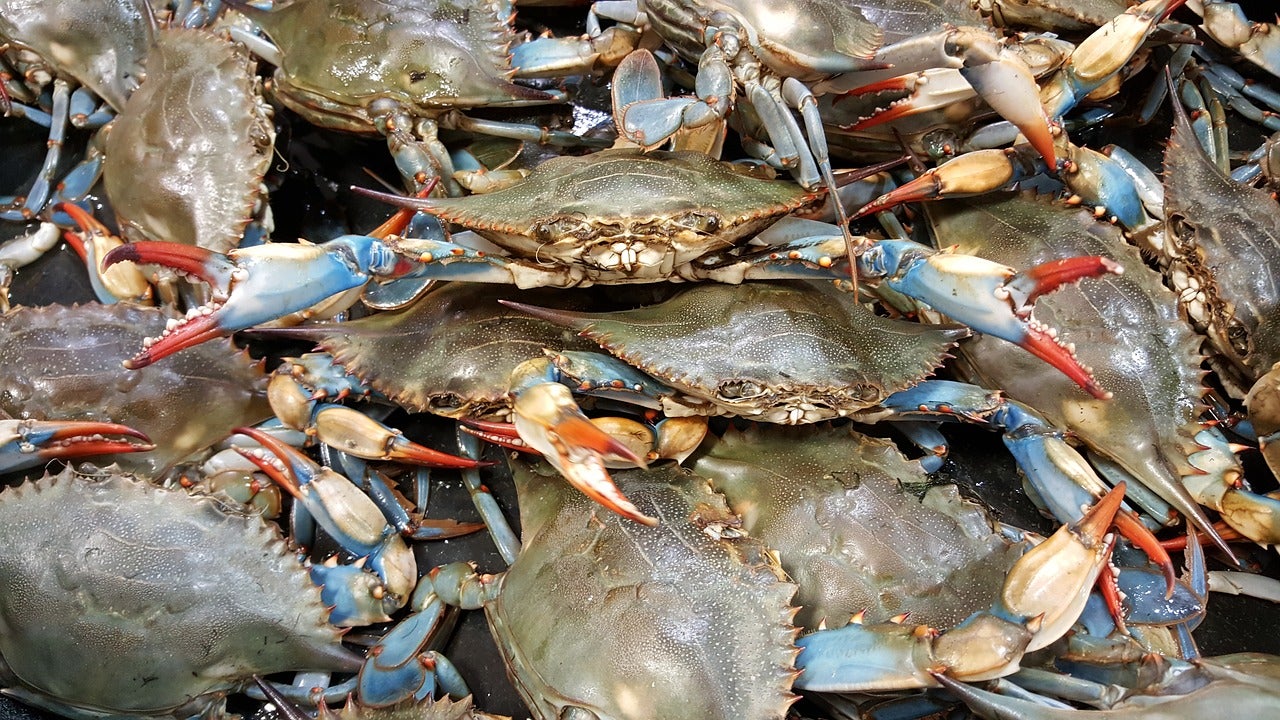Photo by: Pixabay user Astama81.
Harvard researchers have traced the major sources of methylmercury, a poisonous form of metal, in the U.S. diet. Although most of that exposure comes from eating seafood, the geographic origins of the mercury hasn’t been well understood until now.
Why it matters: The organic form of mercury, methylmercury (MeHg), can cause long-term cognitive problems in children, and harm cardiovascular health in adults.
- Mercury is released into the atmosphere by coal combustion and gold mining, and can work its way into the land, air, and water. It can be spread around the world through major atmospheric and ocean currents.
- One of the largest sources of mercury emissions to the air in the U.S. and globally are coal-fired power plants. Most coal contains trace amounts of mercury that is released when the coal is burned.
- Mercury exposure in the U.S. occurs mostly through the consumption of contaminated fish including those sold in grocery stores. Tuna consumption alone may account for more than 90% of methylmercury intake by the U.S. population.
The background: A global treaty called the Minamata Convention was put into place in 2017 to reduce human-created mercury emissions. In order to understand how it may affect humans’ exposure to mercury in the environment, the study’s authors reasoned, it was essential to know where the bulk of each nations’ seafood comes from.
“Seafood is one of the last wild foods consumed by humans and an essential source of protein and micronutrients for many populations. This work shows that global environmental quality and the health of the oceans affects the food we eat,” says Harvard Chan School’s Elsie Sunderland, senior author of the study.
The Upshot: This work confirms that the largest fraction of methylmercury in the U.S. diet comes from open ocean fisheries (45%), mainly those in the equatorial and South Pacific Ocean. Knowing this will help reduce future mercury exposure for the U.S. population, as well as other populations worldwide that rely on those fisheries.
Climate Connection: In addition to winding up in fisheries, mercury emissions released into the atmosphere by coal combustion and gold mining can also be pushed into Arctic air by prevailing winds. During rain or snow events, mercury can fall onto land, where it becomes frozen into Arctic permafrost. As global temperatures warm, that land can thaw, releasing the mercury back into the environment.
Resources:
- Study tracks mercury sources in seafood
- Decadal Changes in the Edible Supply of Seafood and Methylmercury Exposure in the United States
- Toward an Assessment of the Global Inventory of Present-Day Mercury Releases to Freshwater Environments
- Should Pregnant Women Eat Fish? Exploring Prenatal Exposures to Chemicals

Public Health Benefits Associated with Mercury Emissions Reductions from U.S. Power Plants
Our new white paper makes a science-based case for why it is appropriate and necessary to regulate mercury emissions from the power sector.

EPA weakens control on mercury
The EPA's new method of calculating the costs and benefits of mercury pollution would weaken mercury regulations and risk public health.

Increasing Seafood Options in Children’s Diets
Dr. Aaron Bernstein promotes the health benefits of fish in childrens' diets and debunks the idea of high toxicity of seafood.

U.S. children not eating enough shellfish, study says
Explores the new report from the American Academy of Pediatrics, written by Co-director Dr. Aaron Bernstein, on the benefits, risks and sustainability issues surrounding seafood and children's health.
